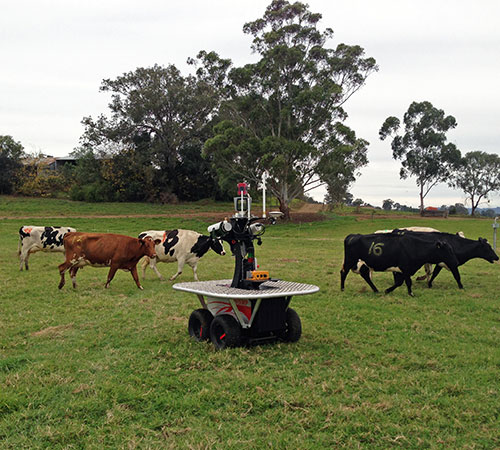| Sep 24, 2013 |
Robotics will change market landscape
|
|
(Nanowerk News) Robotics can offer the Australian agricultural industry the chance to regain its competitive edge in the global marketplace, according to Professor Salah Sukkarieh from the University of Sydney.
|
|
The robotics expert will address Australia's Annual Growth Summit held this week at NSW Parliament House with a presentation titled 'Technology and Innovation: Our Newest Agriculture Export'.
|
|
The summit, held on 19 and 20 September, will focus on food production and sustainability in Australia and overseas.
|
|
The two-day forum will review the economic contribution of Australian agriculture to domestic and international markets, commercialisation of Australian products, the impact of local infrastructure on food production, as well as how to revitalise investment in long-term research and development.
|
|
Hosted by the public policy network Global Access Partners, the summit is as part of a National Economic Review series.
|
 |
| The 'Shrimp' interacts with University of Sydney dairy cows at 'Corstorphine' dairy farm in Camden. This collaborative effort between ACFR and the Dairy Science Group (Faculty of Veterinary Science) aims to reduce time spent in repetitive tasks such as herding the cows for milking.
|
|
Professor Sukkarieh, Director of Research and Innovation at the Faculty of Engineering and Information Technologies' Australian Centre for Field Robotics, says:
|
|
"The Asia-Pacific region is looking to Australia for farming and agriculture solutions and there are discussions on Australia becoming the food bowl of Asia."
|
|
But Professor Sukkarieh says a declining labor force and outdated technology could restrict Australia's ability to meet the demand for fresh produce.
|
|
"This is where automation can help. We can use it to increase efficiency and yield by having many of the manual tasks of farming performed by specially designed agricultural robotic devices."
|
|
"The robots can collect vital information, estimate yield and identify pests, weeds and diseases. The units can be controlled or monitored remotely by farmers using an iPad or phone."
|
|
Professor Sukkarieh's research team is refining the ability of robots like 'the Shrimp' to perform operational tasks such as applying fertilisers and pesticides, watering, sweeping and mowing.
|
|
Mark Calleija, a research engineer at the University who will also attend the summit, says given Australia's growing agricultural sector, the team's aim is to develop and apply automated agricultural robotic systems to benefit of both growers and consumers.
|
|
"In the next phase we will be developing algorithms that will enable robotic devices to conduct pest management patrols and carry out harvesting."
|

